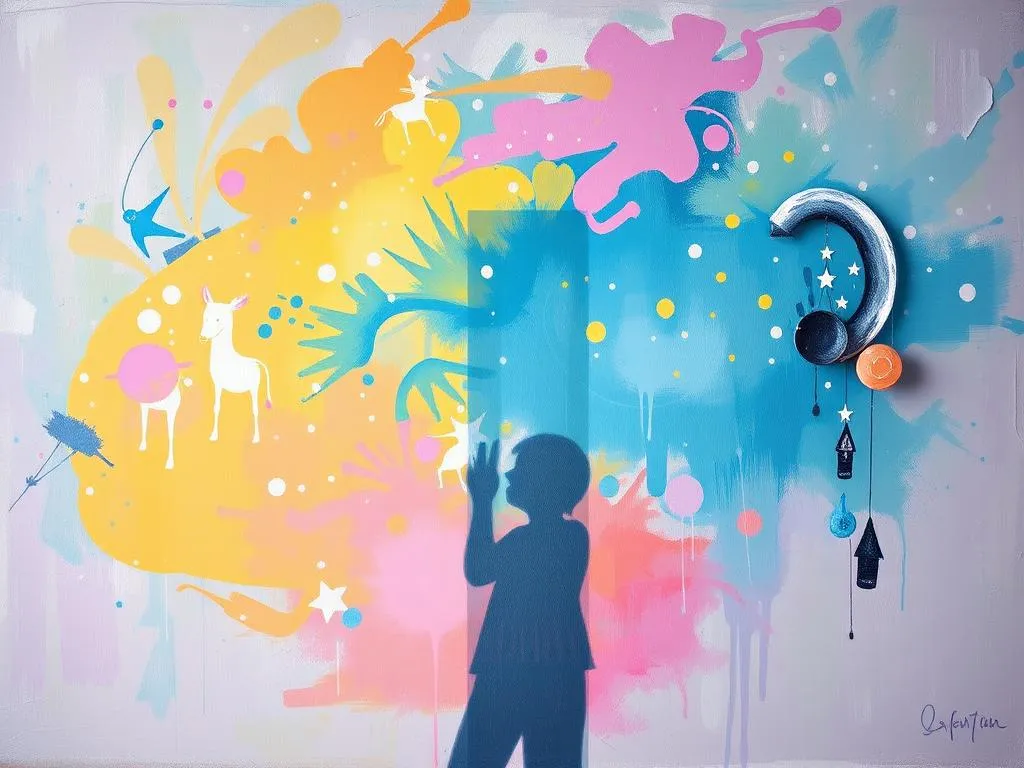
Dreams have long fascinated humanity, serving as a bridge between our conscious thoughts and the subconscious mind. One of the most intriguing symbols that often appears in dreams is the shadow. This symbol is deeply rooted in our psyche and can hold a multitude of meanings, making its appearance in our dreams both significant and thought-provoking. Understanding the symbolism of the shadow in dreams is not just a whimsical exercise; it provides insights into our inner selves and can illuminate aspects of our lives we may wish to confront or explore.
Symbolism and Meaning
The shadow in dreams represents the parts of ourselves that we often suppress, deny, or remain unaware of. This concept is largely influenced by the psychological theories of Carl Jung, who described the shadow as the repository of our repressed weaknesses, desires, and instincts. When you encounter a shadow in your dreams, it invites a deep exploration of your own psyche.
This symbol often emerges in various forms—sometimes as a dark figure, a looming presence, or even a shapeless silhouette. Regardless of its manifestation, the underlying message remains consistent: it calls attention to the hidden aspects of your personality. For instance, if you dream of a shadowy figure following you, it might signify that you are avoiding certain emotions or truths in your waking life. Conversely, if you confront the shadow, it can indicate a readiness to embrace these hidden facets and integrate them into your self-identity.
Moreover, the shadow can also represent fear and anxiety. When a dream features a menacing shadow, it may symbolize apprehensions or unresolved issues lurking beneath the surface. This interpretation encourages the dreamer to reflect on what fears they might be avoiding and to consider the possibility of facing them head-on—an act that can lead to personal growth and healing.
In addition to personal fears and traits, the shadow can also symbolize societal issues or collective fears. For example, a dream featuring a shadow that is particularly dark and oppressive may reflect societal anxieties about current events or cultural tensions. This broader perspective allows the dreamer to connect their personal experiences with larger themes in the world, fostering a greater understanding of the social environment.
Key Scenarios and Variations
The context of the shadow in dreams can drastically shift its interpretation. For instance, consider a scenario where the dreamer is running away from a shadow. This scenario may indicate a desire to escape from one’s own insecurities or unresolved conflicts in waking life. The act of fleeing suggests a struggle with acceptance and an attempt to distance oneself from uncomfortable truths.
On the other hand, if the dreamer turns to face the shadow, this can symbolize courage and a willingness to confront inner demons. This act of facing the shadow can represent a turning point, indicating that the dreamer is ready to engage with the buried aspects of their psyche. Such dreams often serve as a call to action, urging individuals to acknowledge and embrace their full selves—flaws and all.
Another variation is when the dreamer merges with the shadow, becoming one with it. This scenario can signify a profound acceptance of oneself, including the traits that may have previously been deemed undesirable. It reflects a journey towards wholeness, where integration of these shadow aspects leads to a more authentic existence.
Alternatively, if the shadow appears as a guide or protector, the interpretation shifts again. In this context, the shadow can embody the wisdom gained from past experiences, particularly those that were painful or challenging. This scenario highlights the dual nature of the shadow—it can be both a source of fear and a wellspring of insight, depending on how you choose to engage with it.
Real-Life Connections and Takeaways
Understanding the shadow in dreams opens up opportunities for deep self-reflection and personal growth. Here are some insights to help you connect these dreams to your waking life.
First and foremost, consider keeping a dream journal. Recording your dreams immediately upon waking can help capture the nuances that often fade with the morning light. Look for recurring themes, particularly those involving shadows. Are there particular emotions or situations that consistently arise? Analyzing these patterns can reveal underlying issues that may need your attention.
Next, reflect on your current life circumstances and how they might relate to your shadow dreams. Are there ongoing conflicts, repressed feelings, or aspects of your personality that you find difficult to accept? Engaging in honest self-reflection can help you identify what your shadow is trying to communicate. For instance, if you find yourself dreaming of a shadow during a time of stress, it may reflect feelings of overwhelm or inadequacy that you have yet to confront.
Moreover, consider the actions you take in the dream. Are you avoiding, confronting, or integrating the shadow? Your responses in the dream can mirror your responses in real life. If you find yourself consistently fleeing from the shadow, it may be time to explore what you are avoiding in your waking life. Conversely, if you face and embrace the shadow, you may be on a path toward acceptance and healing.
It’s also beneficial to engage in practices that foster self-compassion. Accepting and integrating the shadow does not mean condoning negative behavior; rather, it involves acknowledging the complexity of your humanity. Embrace the idea that everyone has a shadow side, and that recognizing it is a step toward personal growth. Activities such as journaling, therapy, or even creative expression can provide safe outlets for exploring these hidden parts of yourself.
Lastly, consider seeking support from others. Engaging in discussions about dreams with trusted friends or a therapist can provide valuable perspectives. Sharing your experiences can help you feel less isolated in your journey and may even lead to insights you hadn’t considered before.
Conclusion
The symbol of the shadow in dreams is a profound invitation to explore the hidden depths of your psyche. By understanding its meanings and variations, you can unlock important insights about your fears, desires, and the aspects of yourself that yearn for acknowledgment. This deeper awareness not only enriches your dream experience but also enhances your overall emotional and psychological well-being.
As you continue to reflect on your shadow dreams, remember that the journey of self-discovery is ongoing. Embrace the complexities of your being, and allow yourself the grace to grow and evolve. In doing so, you may find that your dreams serve as a powerful guide, leading you toward a more integrated and authentic self.







